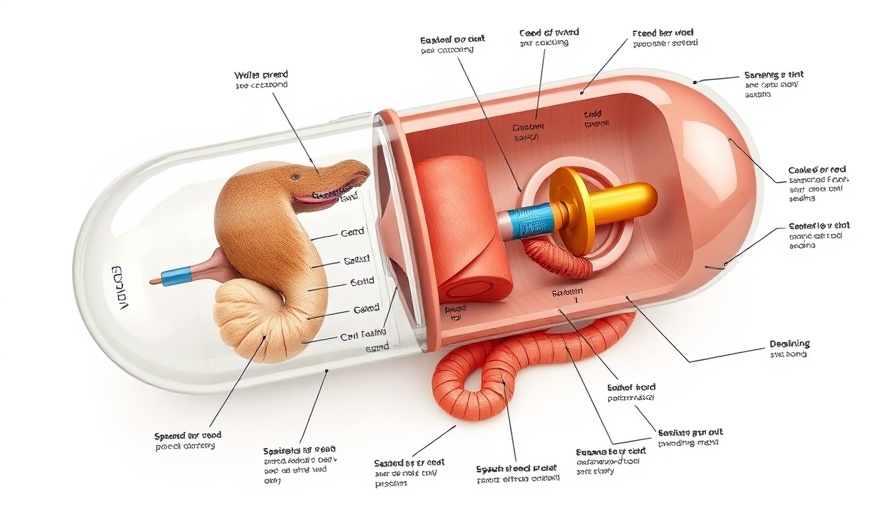
Revolutionizing GI Health Monitoring with Smart Technology
As our understanding of the gastrointestinal (GI) tract deepens, so does the recognition of its essential role in overall health. From digestion to hormone production and even neurotransmitter regulation, our GI system is a complex environment teeming with vital biomarkers. Traditional methods for monitoring these biomarkers, such as fecal samples and biopsies, are invasive and lack real-time capabilities, meaning they can't keep pace with our evolving understanding of gut health.
PillTrek: A Game-Changer in Gastrointestinal Health
Enter PillTrek, a groundbreaking new smart capsule developed by a team of engineers at the California Institute of Technology (Caltech). This innovative capsule is designed to track vital metrics, including pH levels, temperature, and a variety of biomarkers within the gut, enabling continuous monitoring. Measuring just 7 millimeters in diameter and 25 millimeters in length, PillTrek is not only smaller than typical capsule endoscopes but also quite capable. It boasts an electrochemical workstation that operates on low power, facilitating a broad array of measurements.
What Makes PillTrek Stand Out?
The versatility of PillTrek is remarkable. According to Wei Gao, a key developer of the technology, the capsule can measure everything from short-chain fatty acids, crucial in metabolic health, to neurotransmitters like serotonin, which impact mood and cognitive functions. This adaptability means researchers can easily swap out sensors to focus on various biological markers, expanding the capsule's application in diagnosing and managing diseases.
Testing and Proof of Concept
PillTrek has already undergone initial testing where it measured pH, temperature, glucose levels, and serotonin concentrations in animal models. Such early-stage results point to the potential of this technology to offer real-time data that could revolutionize how we approach GI health monitoring, possibly paving the way for personalized medicine tailored to individual digestive health needs.
Future Prospects and Implications
With ongoing research and further development, PillTrek could become a staple in preventive healthcare, allowing individuals to gain insights into their digestive health without the need for invasive procedures. As our lifestyles become more data-driven, the capacity to monitor our health in real-time will help both patients and healthcare providers make informed decisions.
The development of this smart capsule represents a noteworthy advancement in health technology, blending convenience and innovation. As we continue to emphasize the importance of gut health, tools like PillTrek may become essential for understanding how dietary choices and lifestyle impact our wellbeing.
Keep an eye on this space as research progresses and the potential for widespread application takes shape. This is not just a victory for technology but for public health as we strive to be proactive rather than reactive concerning our health.
Stay tuned for more updates and breakthroughs in health technology, and consider how innovations like PillTrek might change your approach to health monitoring.
 Add Row
Add Row  Add
Add 




 Add Row
Add Row  Add
Add 
Write A Comment